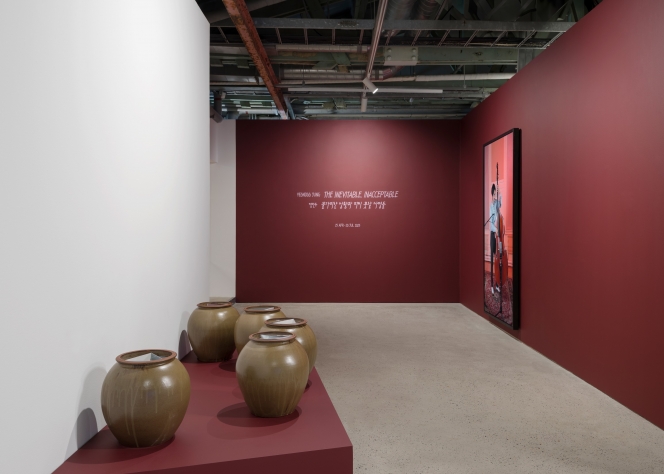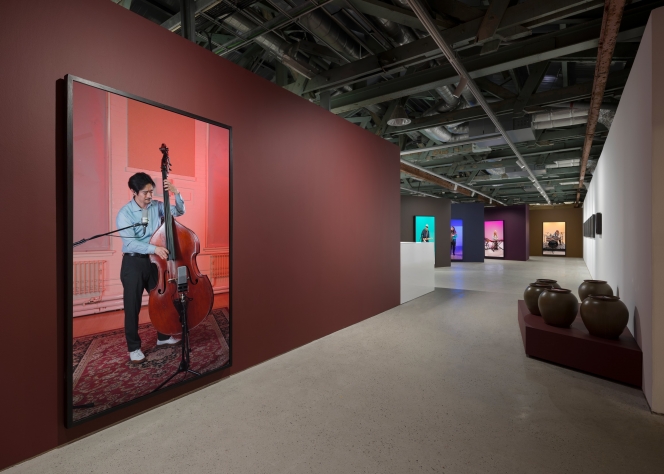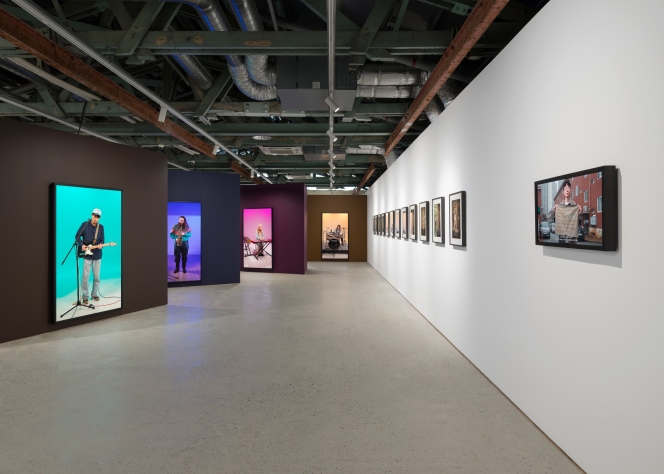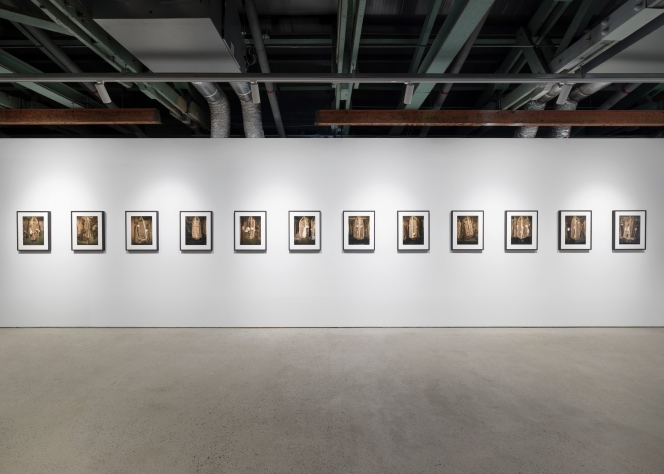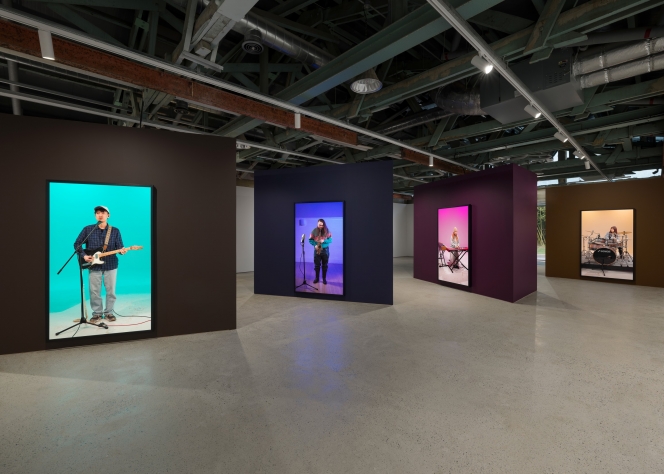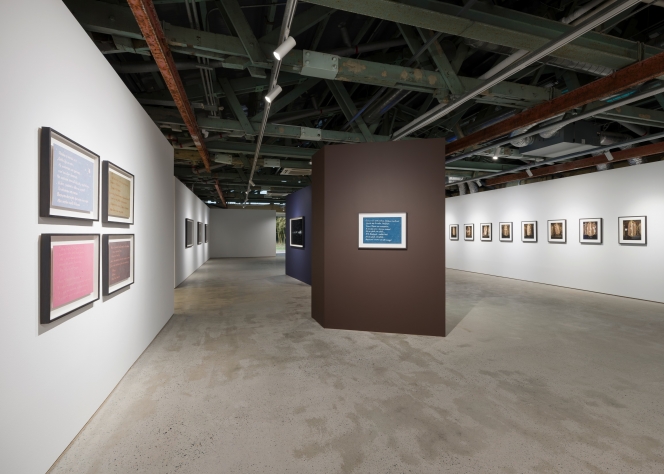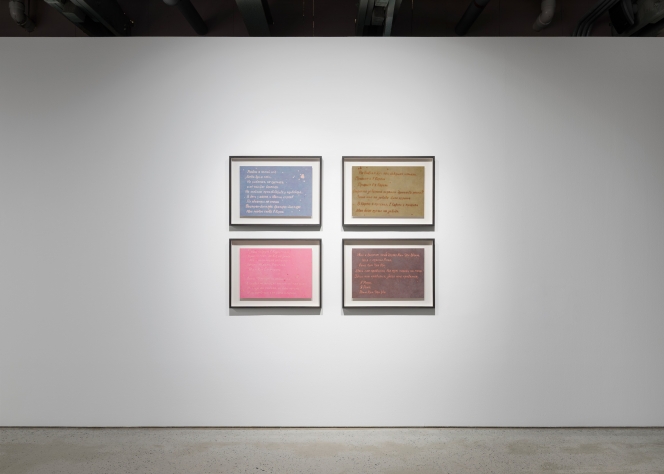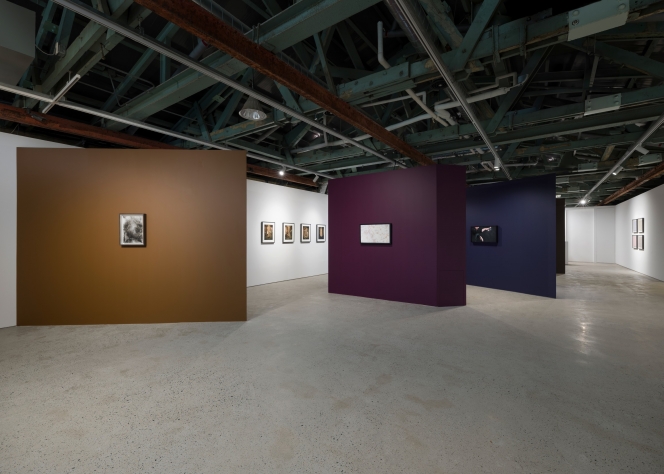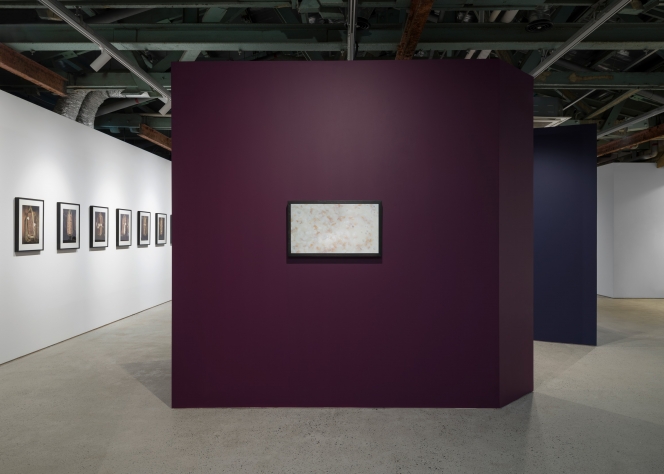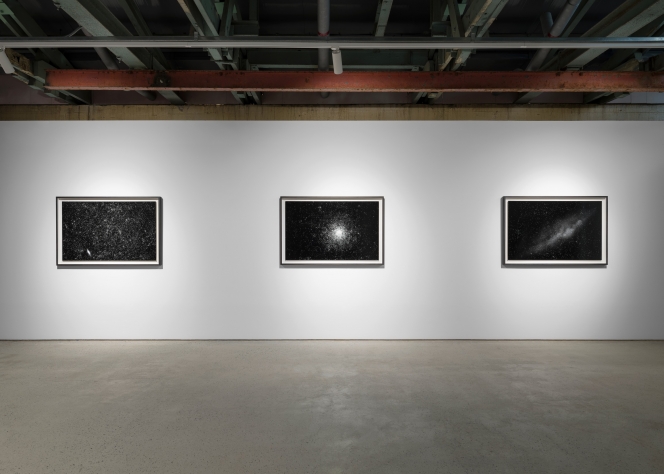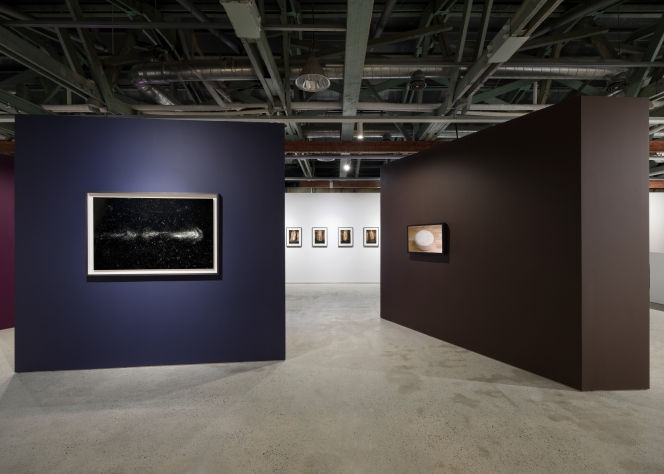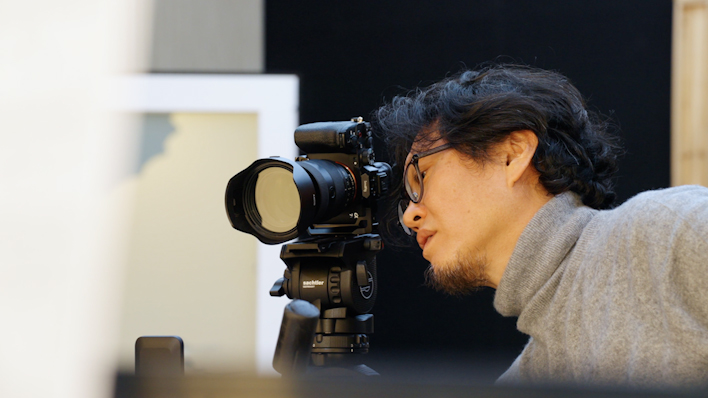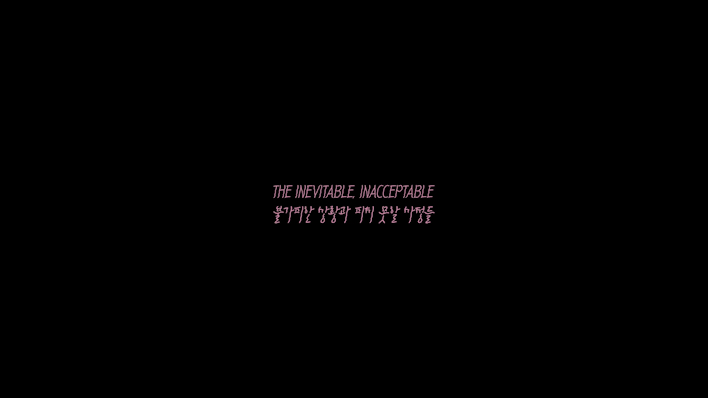Kukje Gallery is pleased to present Yeondoo Jung’s The Inevitable, Inacceptable, a solo exhibition at the gallery’s Busan outpost from April 25 to July 20, 2025. Working across diverse mediums including video, photography, sculpture, and performance, Jung traverses and conjoins heterogeneous subjects, exposing fissures in our era through subtle observations and interweaving a new texture of senses. Marking his first solo exhibition at the gallery since 2008, The Inevitable, Inacceptable examines the intersection of two subjects, blues music and the rhythm of fermentation, weaving their distinct cultural frameworks together in unexpectedly powerful ways. Through his unique perspective, Jung elaborates on an attitude of humor and yearning as a means of surviving a reality that diverges from one’s intentions and expectations.
The exhibition space unfolds in five distinct yet interconnected conversations, each centered on a performer engaging with the specific material rhythms of their immediate surroundings. Each of these conversations is centered around one of five musicians, arranged in the interior space divided into polygonal structures of various colors. They are simultaneously playing different parts of blues music, each corresponding to the adjacent video, photography, and sculptures installed across from them and conveying their own story within the loose ensemble. Jung’s ongoing interest in the juxtaposition of visual images and sonic elements such as music, voice, intonation, and noise powerfully frame his philosophy about the invisible dynamism and vibrancy of life, which is made tangible through music. In particular, by focusing on blues music, Jung is able to tap into a farcical and boisterous imagination expressed in this genre and elaborate on a musical way of enduring inexplicable circumstances and inevitable difficulties. Rooted in the experiences of African Americans of the Deep South in the mid-nineteenth century following the Civil War, blues developed its distinctive rhythm and lyrics in response to the challenges of a harsh and unforgiving reality.
In resonance with the spirit of life expressed in blues, Jung has created Inevitable Blues (2025), which borrows the twelve-bar structure and instrumental composition of the genre. With simple guidelines made by Ray Soul, Jung provided a tempo of 67 BPM and a set of musical chord progressions and asked different musicians to come up with numerous variations within the structure. He then assembled their individual performances into a single composition, cutting and layering each part to form a unified yet polyphonic whole. The result is a sonic manifestation of life’s rhythmic gestures, voiced in the sounds of contrabass, vocal, saxophone, organ, and drums, that altogether resonate as a piece of asynchronous symphony.
Upon entering the gallery, viewers first encounter Aching Fingers (2025), a sculpture consisting of five ceramic vessels that scintillates in accordance with the finger movements of the contrabass player. Much like the whimsical swing of blues music conceals hardship, or how the beautiful sounds of string instruments emerge with throbbing fingertips, Aching Fingers emanating colorful lights through a kaleidoscopic light effect visualizes the underside of the music. Juxtaposed with this atmospheric work, a vocalist with a comforting voice responds to the gestures of Koryoin, ethnic Koreans who settled in the former Soviet Union upon being forced to migrate due to historical and political circumstances. Having maintained a long-standing interest in the dislocated spatio-temporal experiences of migrants, Jung turns his attention to Koryoin and shares a slice of their lived experience. The interview with Koryoin, who in this particular case have relocated to Korea, is rewritten as a lyric and sung in the blues melody. Inscribed on the Indonesian batik fabric hung on the back wall, their stories are recorded with melted honeycomb and are tinted onto the fabric with domestic natural dyes made with gardenia, turmeric, and redroot gromwell, herbs often used in indigenous Korean medicinal treatments.
In harmony with the music, multifaceted images of fermentation flourish in the exhibition space. Jung, a self-taught brewer of makgeolli (a traditional Korean alcoholic beverage), connects the rhythms of this celebrated drink to blues music in general. Scrutinizing the fermentation process of makgeolli, which requires combination of rice grains and microbes known as nuruk, Jung observes that this is not merely a chemical and culinary phenomenon but echoes elements of cosmology, the fermentation resembling a divine realm accessible only through the dynamic between natural bodies, what the artist describes as “yearning.” In the gallery, the drums are played to the beat of popping bubbles, while the flour dough rises into a sourdough—like the breath of a performer—flowing in tandem with the sound of the saxophone. Adjacent to this work is Portrait of Bacillus (2025), a photographic series capturing goblin-like, crooked contours resembling faces that emerge in the white gaseous bubbles formed during the fermentation of meju (a traditional Korean fermented soybean block)—a process itself born of the interaction between beans and the exotic bacterium bacillus. Discovering human likenesses in the traces of fermentation, Jung’s playful photographs marvel at the natural world where difference and resemblance coexist, transforming these moments into humorous and earthly images.
The mystical microbial operations expand further into the creation of a universe. In response to the touch of the organ and piano, a percussionist scatters flour on a table, producing a screen reminiscent of the stars dispersed in the universe. Alongside this gesture of creation are photographs evoking a galaxy and a nebula. As revealed in the adjacent video, these images were formed by sprinkling baking flour onto black marble. This vast universe—born of a celebratory, wishful gesture of rubbing and clapping hands—turns out to be composed of the humble material of flour. Here, one encounters Jung’s signature irony, a subtle interweaving of light and grave, playful and solem, held in balance by the exhibition’s unique push and pull. In the face of life’s enigmatic mechanisms, Jung’s work challenges conventional categories, juxtaposing macro and microcosmic worlds with a spirit of humor and yearning, sustained by an abiding affection for life’s many wonders. In this exhibition-as-stage, music and image resound in polyphonic harmony—music that is the very rhythm of the heart, accompanying one through life's inevitable joys and sorrows as well as fate and coincidence.
About the Artist
Yeondoo Jung (b.1969) graduated from Seoul National University’s Department of Sculpture and received an MFA from Goldsmiths, University of London. Currently based in Seoul, Korea, Jung has focused on a variety of mediums ranging from photography and video to installation works both directly and indirectly involving performance. Often finding his subject matter in the quotidian experiences of everyday people, he interrogates invisible narratives and examines possibilities that stem from banal residues. In this process, he uses a relational method of interacting and collaborating with others, creating a threshold for moving between art and life, as well as the subject and object of art. Jung was the recipient of the “Artist of the Year” award by the National Museum of Contemporary Art, Seoul, in 2007, and has held major solo exhibitions at the National Museum of Modern and Contemporary Art, Seoul (2023); Ulsan Art Museum (2022); Norton Museum of Art, West Palm Beach, Florida (2017); Art Sonje Center, Seoul (2017); Musée d'Art Contemporain du Val-de-Marne (MAC VAL), Vitry-sur-Seine (2015); Art Tower Mito (2014); PLATEAU, Samsung Museum of Art, Seoul (2014); K11 Art space, Shanghai (2013); and PERFORMA 09, New York (2009), among other venues. Jung has also participated in Gangneung International Art Festival (GIAF) in 2025, the 30th Anniversary Exhibition of the Korean Pavilion at Venice Biennale in 2024, Gwangju Biennale in 2021, and Venice Architecture Biennale in 2016, among others. His work is represented in numerous collections worldwide, including the National Museum of Modern and Contemporary Art, Korea; Leeum Museum of Art, Seoul; Museum of Contemporary Art Tokyo; Museum of Modern Art, New York; Seattle Art Museum; and MAC VAL, Vitry-sur-Seine, among other venues.


